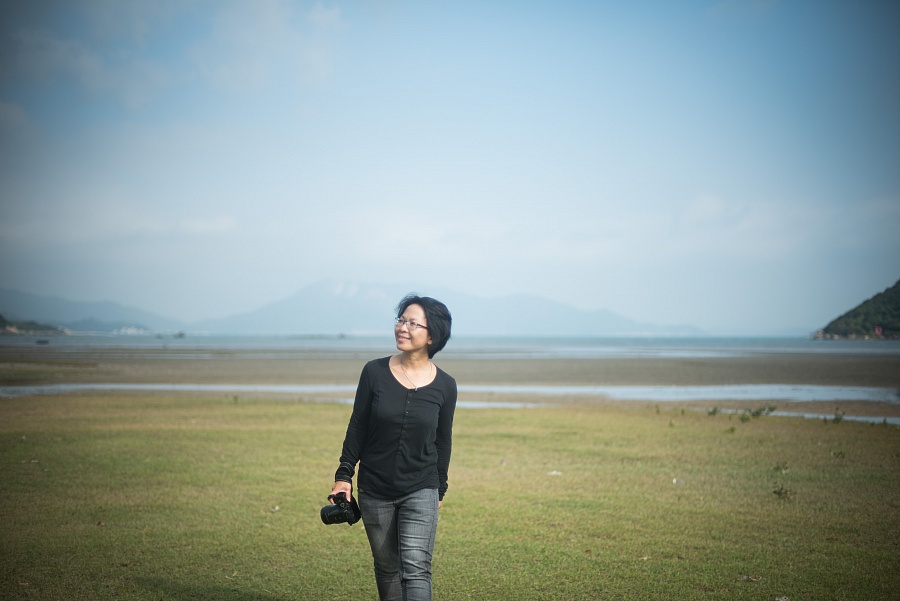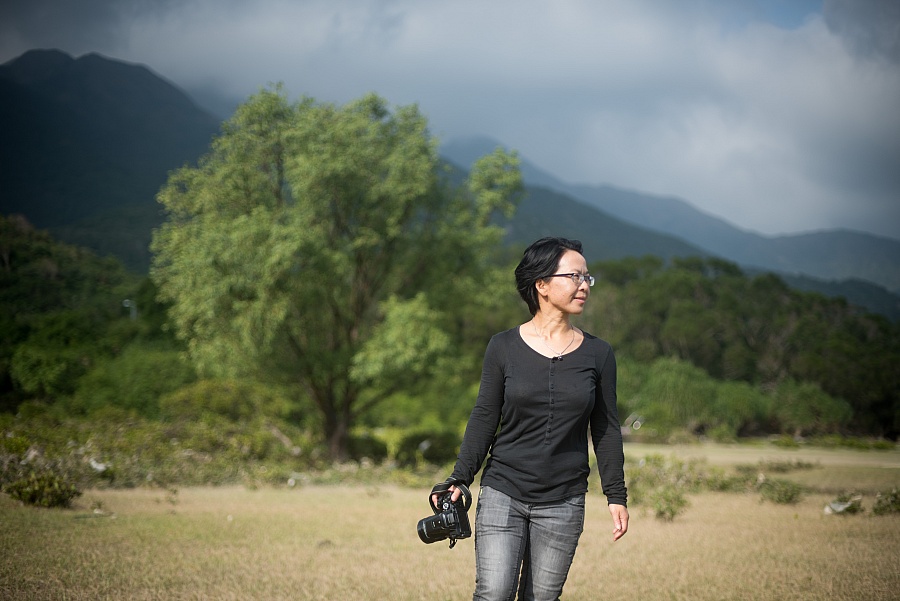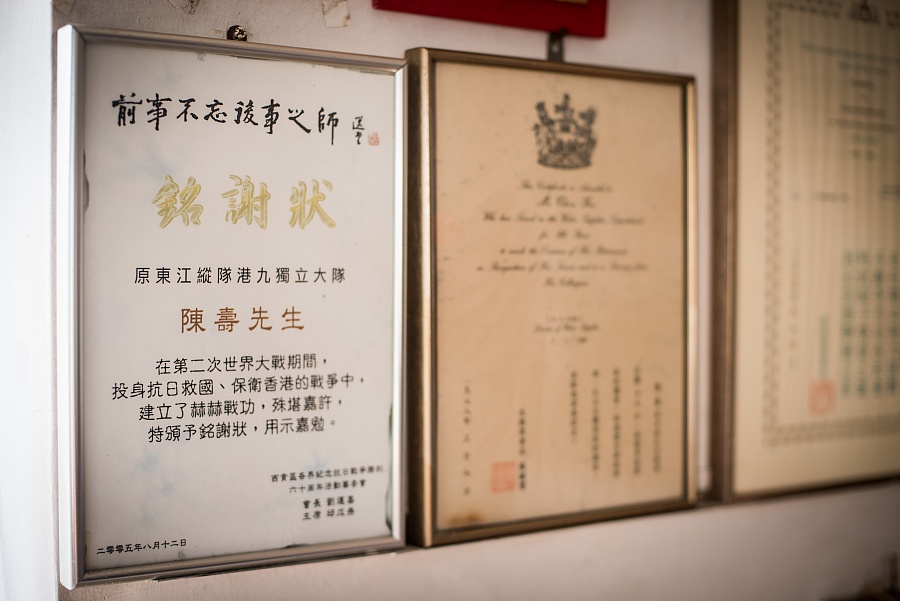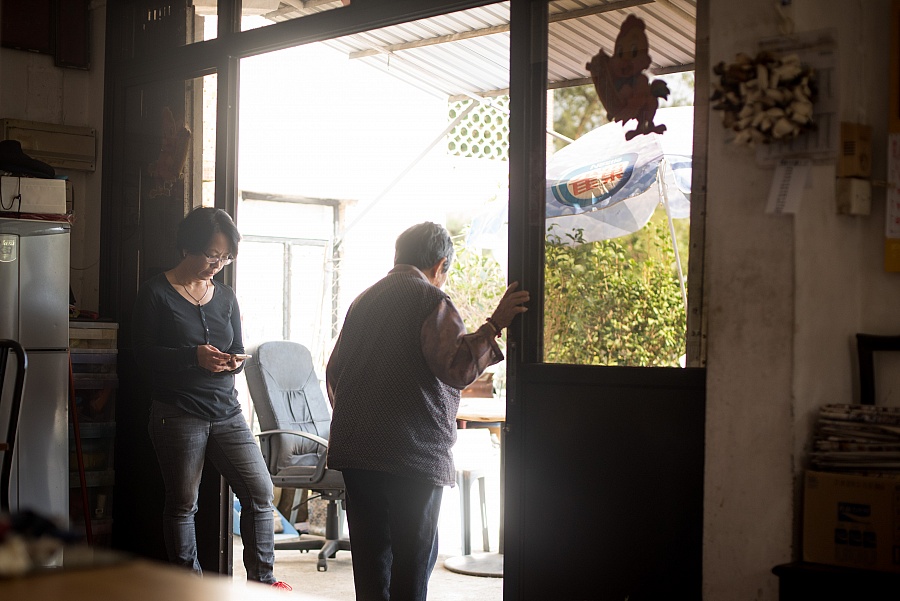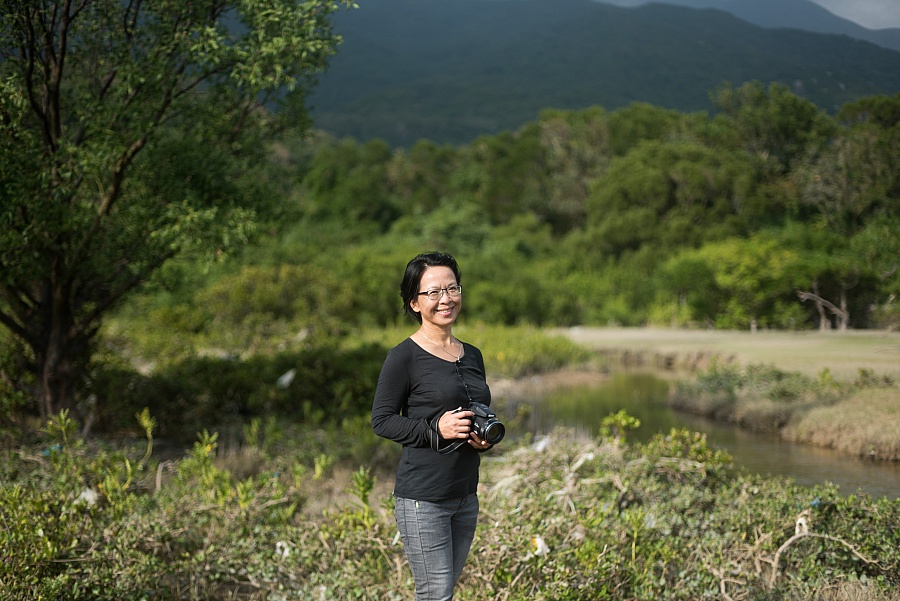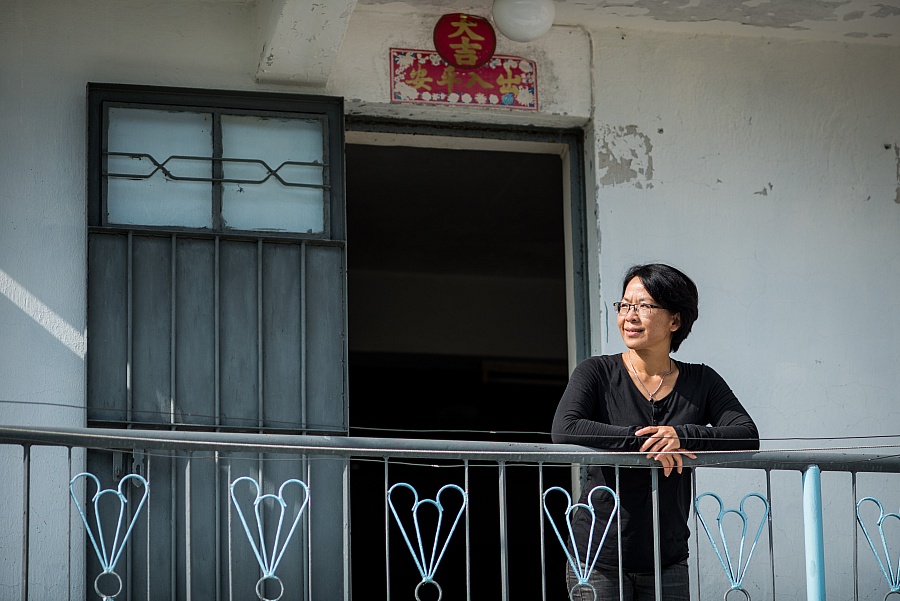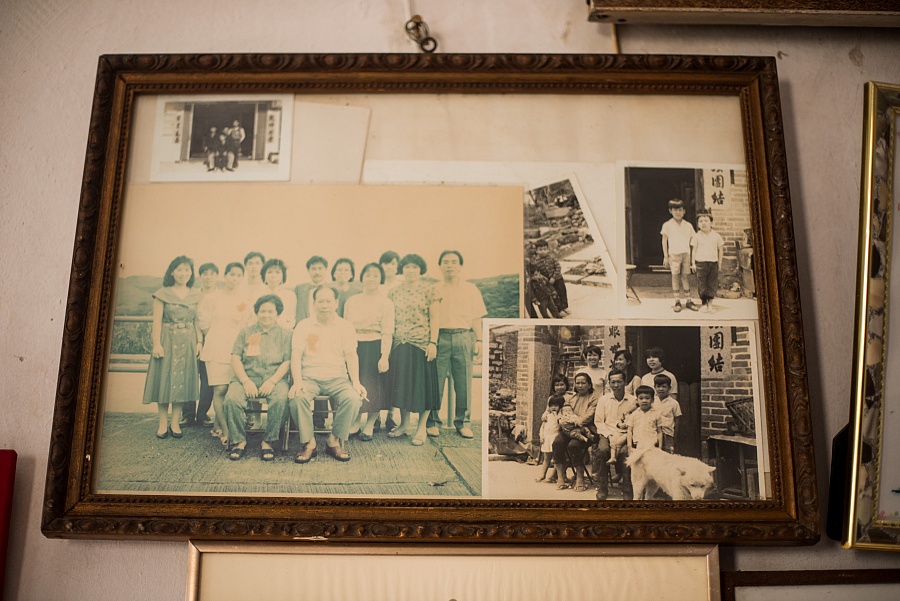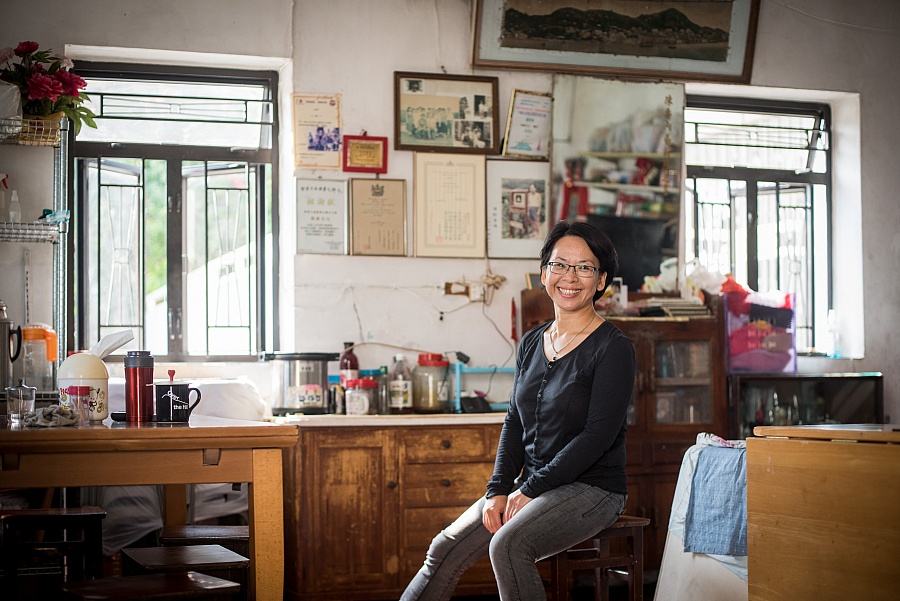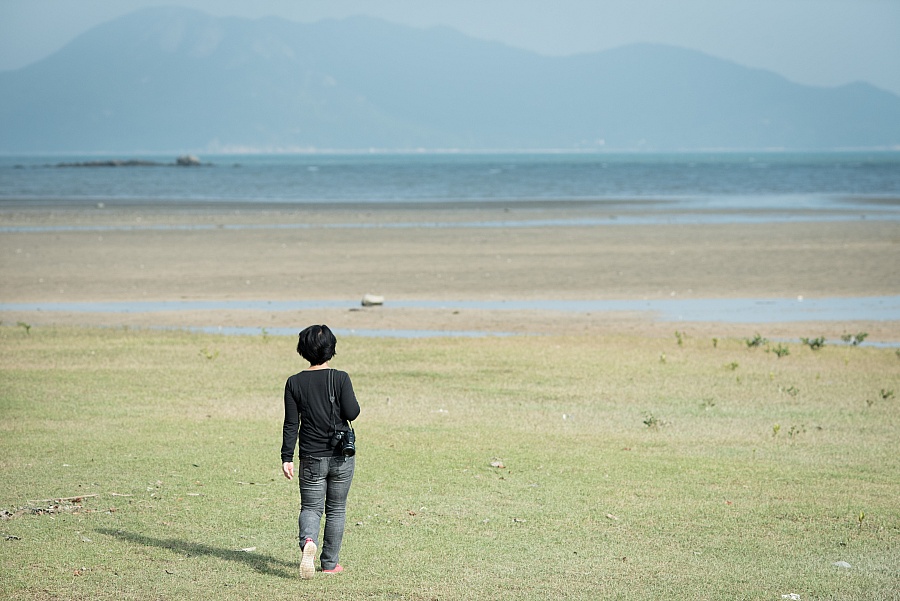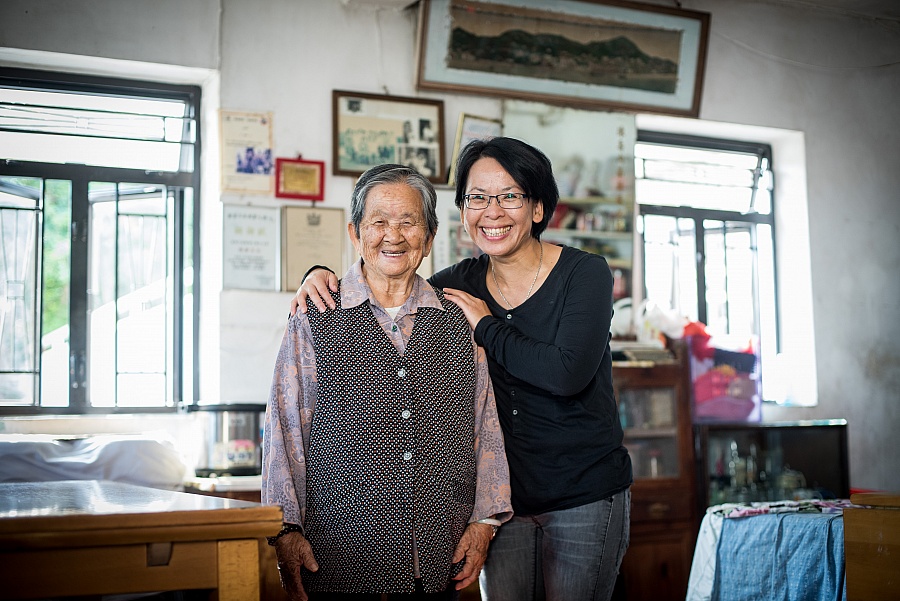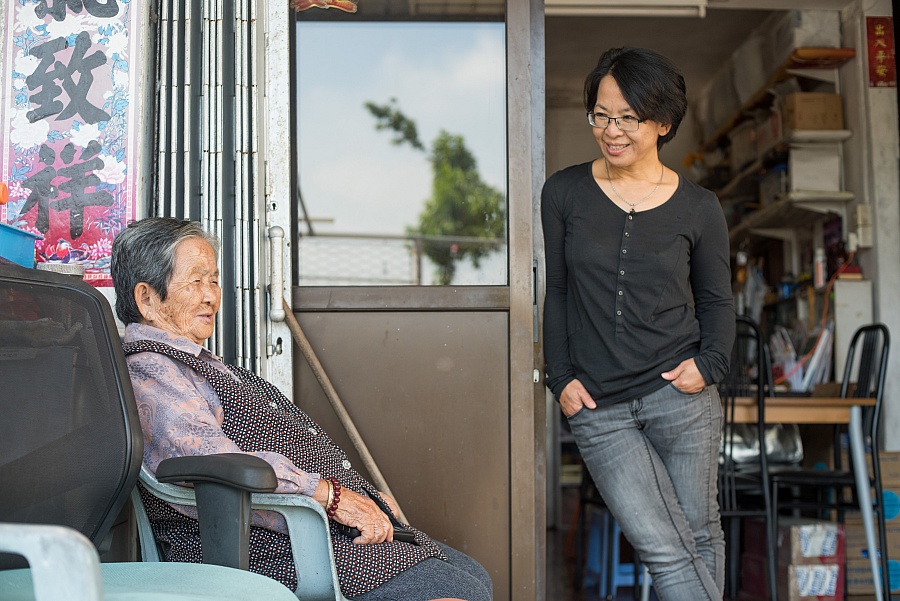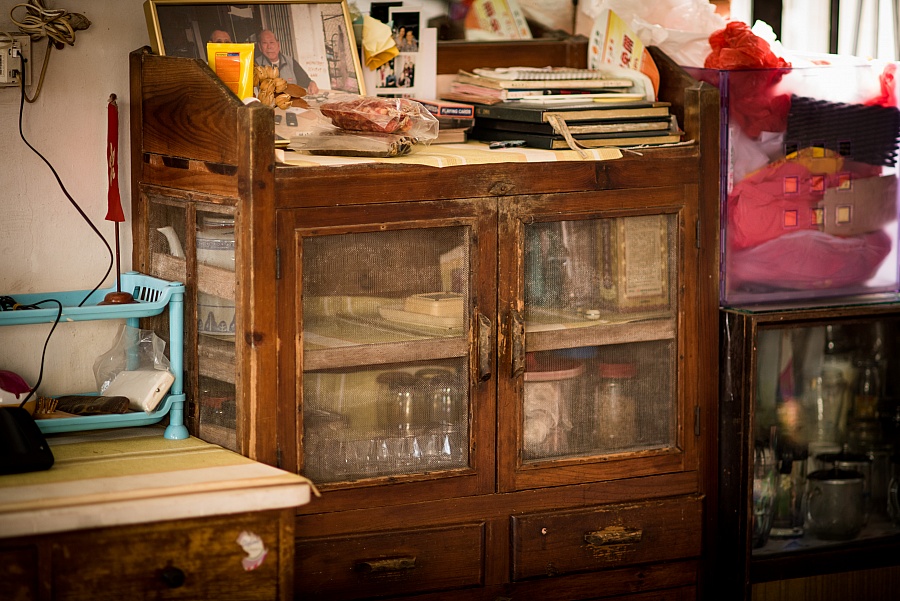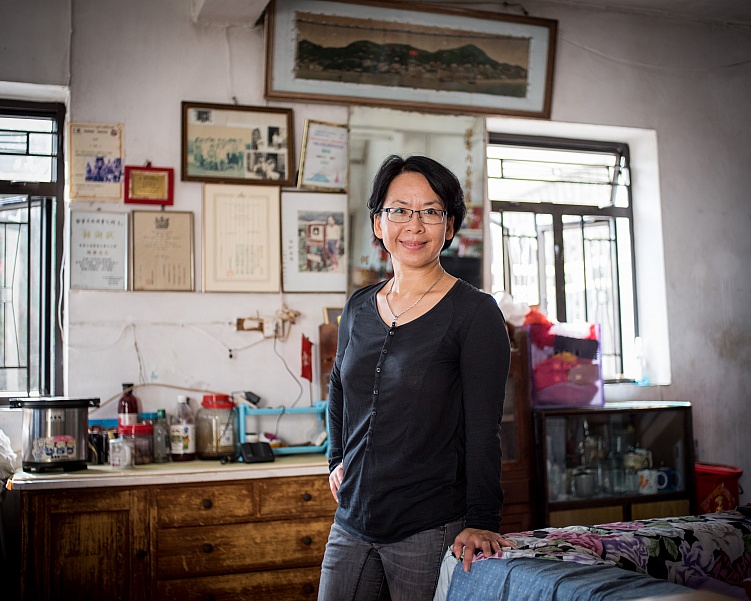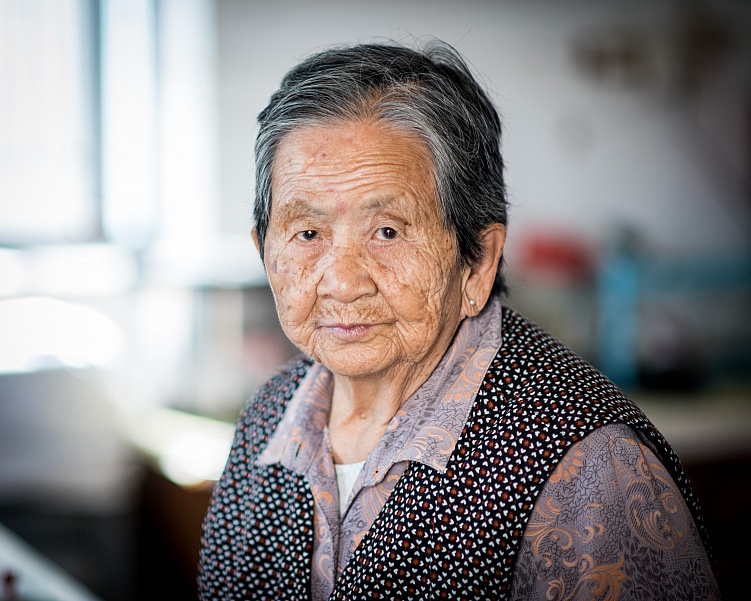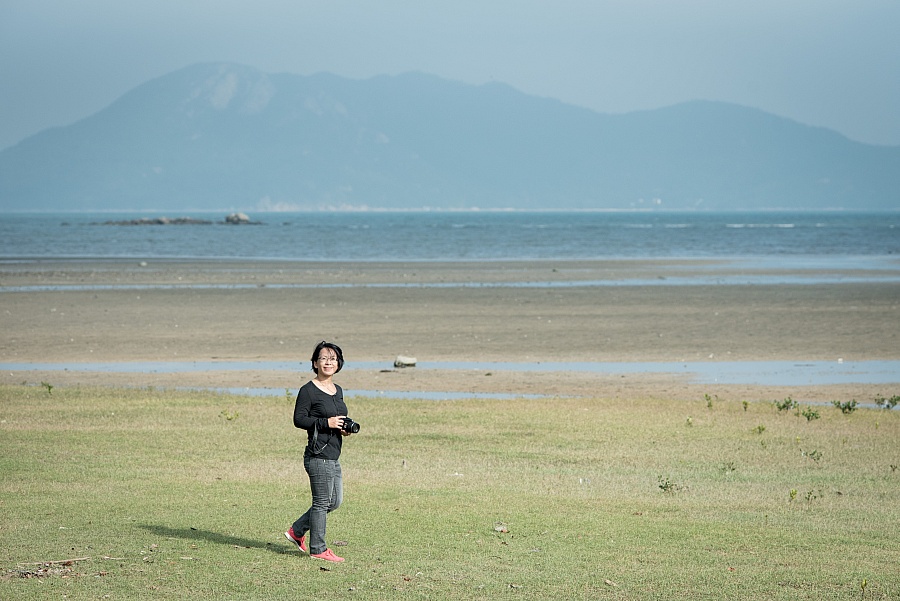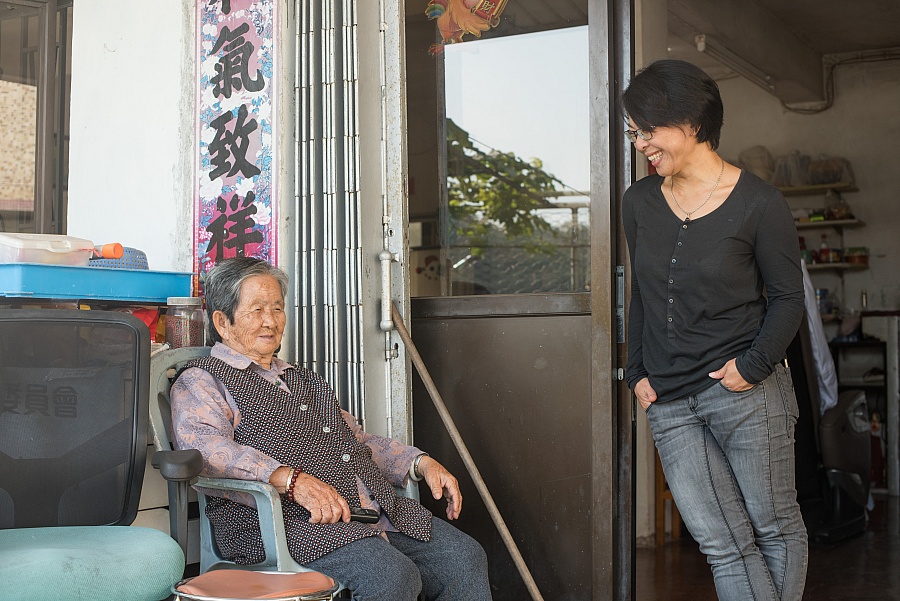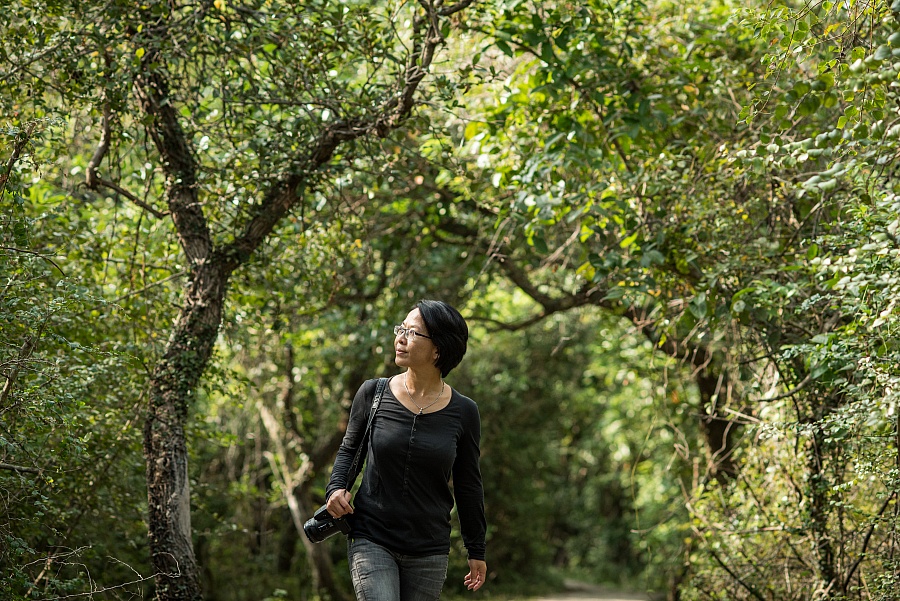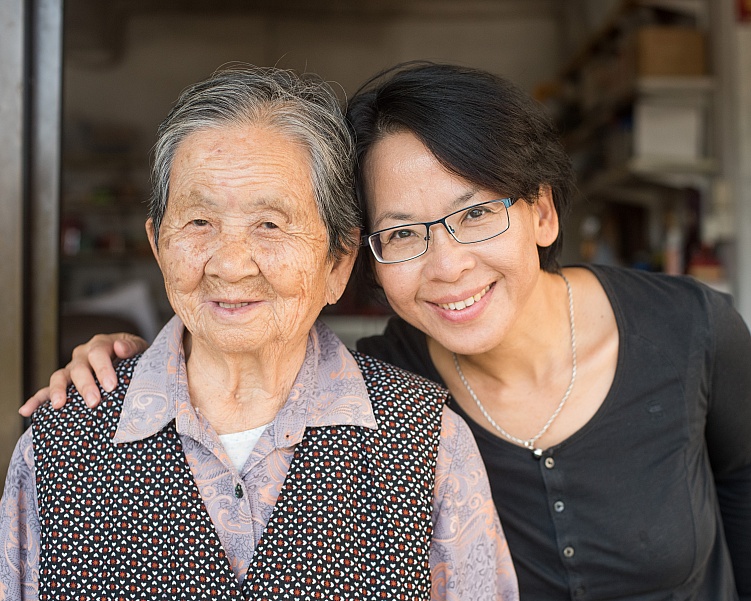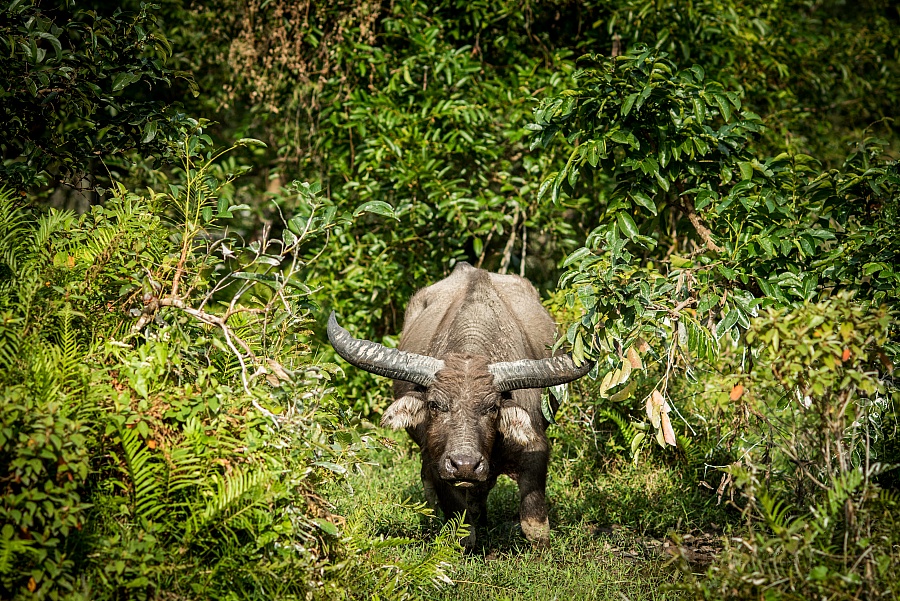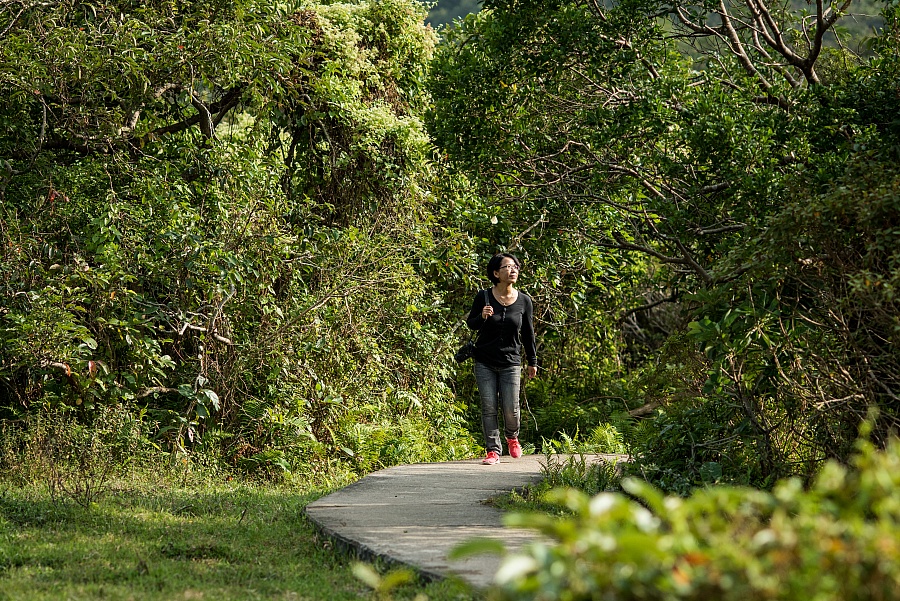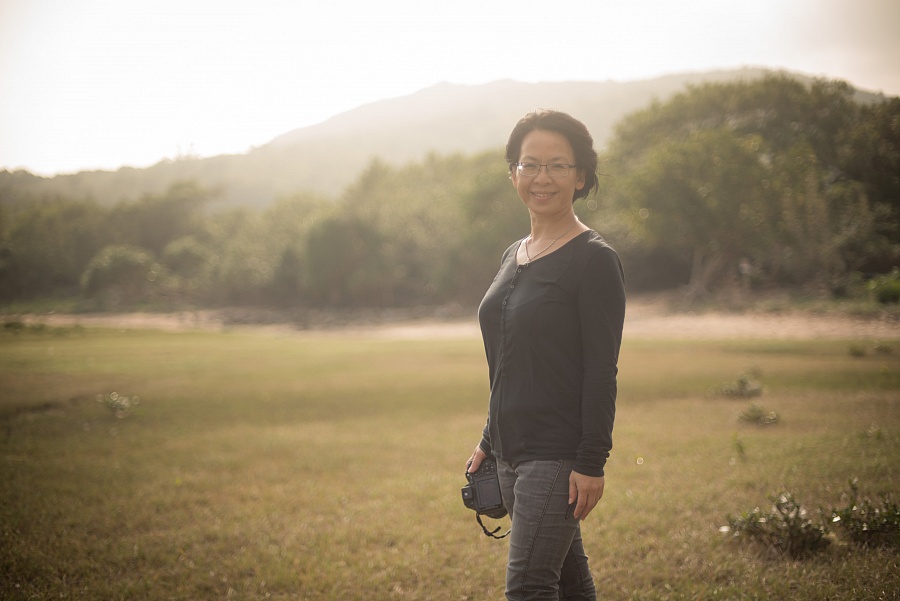The bus approaches Shui Hau Village via South Lantau Road, as the cars slow down to make way for a herd of buffalos. This is the daily scene of Shui Hau. Mink CHAN is a 10th generation indigenous villager of the Chan lineage in Shui Hau. Born in a big family, Mink is the smallest among nine siblings. In a way, she is the fortunate one. Three of her sisters left school early to earn a living in the city.
The Three Lineages
In the past, most residents in Shui Hau were indigenous villagers. There were the Chans, in which Mink belongs, as well as the Chis and the Fungs. The three lineages are closely-knit. Despite recent demographic changes, the indigenous villagers have retained their tradition of collective tomb sweeping and shrines worshipping. It is said that Shui Hau’s founding ancestors are buried in the tombs near the village; while the shrines house the gods who safeguard Shui Hau’s agriculture.
The tradition of shrines worshipping is based on Shui Hau’s history in agriculture. Back when Mink was small, paddy fields were scattered all across the area. Mink’s family grew rice, shallots and lotus. Greens were only grown sparingly, because vegetables couldn’t endure the long travel from Shui Hau to the city. Mink recalls the roots and stems of lotuses, which gave off a unique scent and grew to reach the sky. She would also jump and bounce on the hemp bags full of rice. Mink was just a few years old and couldn’t tend the fields. But she remembers the joy of catching small crabs, prawns and catfishes. When Mink turned five, her father found a job in the Water Supplies Bureau (Public Works Department because water works was under the PWD, I will check the name of the water office), and the family soon stopped farming afterwards.
Apart from the fields, Shui Hau is also noted for its estuary and seaside, two other big playgrounds for Mink. She would catch river prawns and crabs and cook them then and there. Whenever she encountered large horseshoe crabs, Mink would carry one home for food. But she never disturbed the younger ones. Unfortunately, these creatures have since become an endangered species.
Happy Years in Shui Hau
Like those of her generation, Mink left Shui Hau at the age of 17, continuing her study and work in the city. Two decades since her departure, Mink found that her root remains in Shui Hau. “Our memories and emotions for the place and its people make up our root in Shui Hau. This is quite different to city dwellers, who seldom think in terms of roots,” Mink explains.
In recent years, Mink has frequently returned to Shui Hau to accompany her aging parents. She decided to return for good after her father passed away two years ago. In order to keep track of this changing village, Mink has taken many photos of Shui Hau. She brings along her camera during the morning stroll from the fields to the estuary, taking shots of the paddy fields, wetlands, and fluttering butterflies. Shui Hau has become a brand new playground.
Butterflies and Buffalos
Photography has offered Mink a more nuanced perspective. With her friend’s recommendation, she entered a photography competition by the Lantau Buffalo Association. Her documentation of buffalos was recognized with an award. The process also allowed her to observe these “residents” of Shui Hau with renewed interest. She saw that some buffalos were more playful, while others were tamer. While in the past the buffalos looked identical, Mink could now tell different buffalos from their characters and behavior. With the aid of a camera, the buffalos have become multi-faceted creatures.
Those unfamiliar with nature must take time to develop a “natural eye” for the abundant life everywhere. This “natural eye” comes with practice and knowledge of the balance between nature and wildlife. Since her exposure to photography, Mink has become more sensitive of the birds, lizards and insects in her surroundings. However, she is most fond of butterflies. Shui Hau is home to rare butterfly species like the Common Archduke, which was discovered in 2008. “Butterflies like to dance around after it rains, that is the best time to capture shots. My advantage is that I don’t have to travel long and far to take photos in Shui Hau,” Mink says.
Returning to Shui Hau, Mink practices photography, through which she meditates by staying focused. “Whenever I’m with my camera, I’m 100% focused on the details of each butterfly. This is when I find a peace of mind,” explains Mink. Through a visual documentation of her ancestral land, she re-discovers the vibrant life, creativity, and peace in this small village.
Epilogue:
The Secret Art of Clam-digging
The Shui Hau people have developed a unique technique for clam-digging. They begin by identifying the “clam eye”, i.e. telling signs that a clam resides under the sand. A special tool called the clam scythe is used to extract the clam. Great skill, sound observation, and dexterity are required to master the scythe. Or else, one may just dig out a rock or thin air. Mink thinks that the upside for using clam scythes is that small clams are left alone. The other wildlife in the mudflats are not disturbed. In today’s parlance, this is a more sustainable way of clam-digging. The Shui Hau people’s secret art to clam-digging reveals yet another side of the lived culture of the Wai Tau people.
